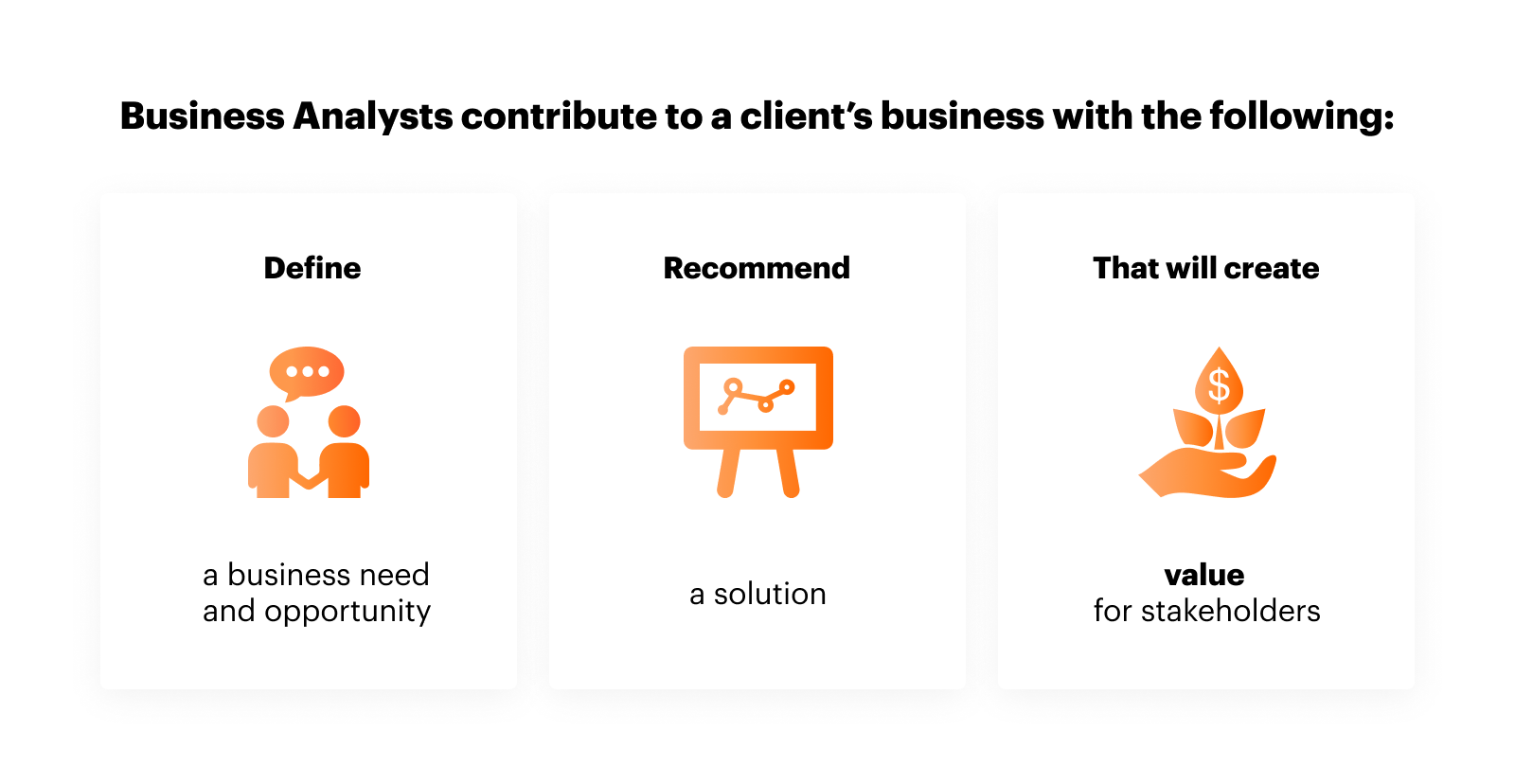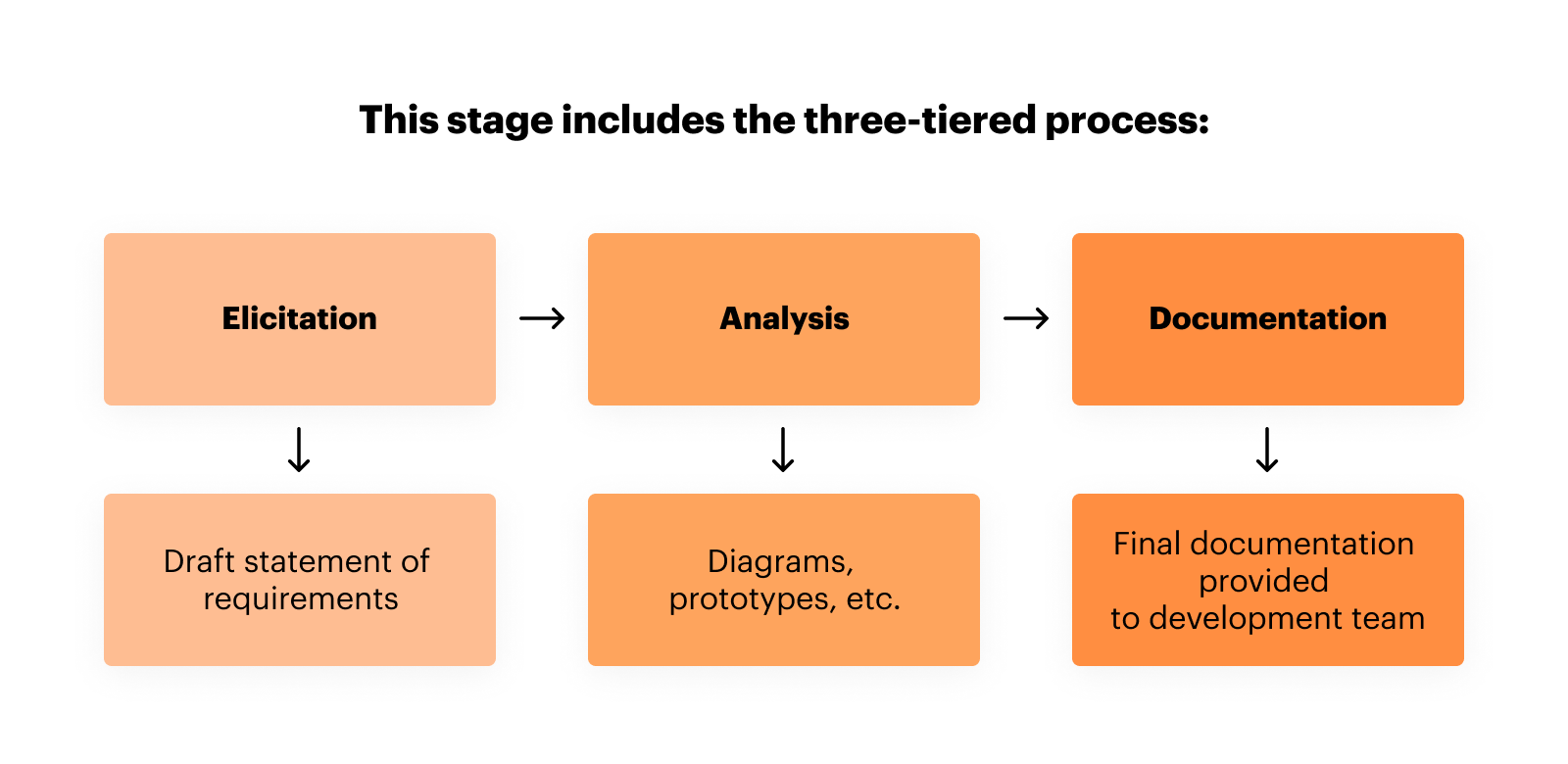Business Analysis at Paralect

And we begin to explain. Then again and again. That's enough! 😀
Our BA team has prepared this post that will be useful for you in any of these 3 cases:
- If you’re our prospective client, you’ll see how much depends on the work of the analyst, especially at the start.
- If you want to join our BA team now or in the future, you’ll know our processes in advance.
- If you’re already on a product team with one of us, you’ll better understand what we do to achieve our common goal.
WHAT do we do?
BAs just write requirements based on what clients say, right? 😏
Of course we prepare specifications! Who, if not us? But the vision of Business Analysis in Paralect is much deeper and wider.

And besides these core outcomes we want to reveal our 1st 🔑 to success: We treat each new client’s project as our own product.
In this case the degree of involvement implies a close interaction with the client, understanding the whole background of this idea, and full business support from just an idea to success!
Business Analysts understand the technical nuances of the solution, the business needs, and the goals of the client. This combination of skills helps formulate a vision of the product and investigate which of the ideas are actually going to work.
We make sure that both sides — business and technology — are on the same page or find a solution if they’re not.
HOW do we do it?
Mainly, Business Analysts work with clients to define their business needs, extract their requirements and document them in a consistent, complete and, above all, useful way for the team that will eventually design and deliver the solution.
In Paralect we created our own checklist with the stages, specific tasks and required deliverables that helps us not to miss important points.
And this is the 2nd 🔑 to success! Let’s go through this guide.
1. Initiation
To capture the business need and help the customer define SMART objectives to allow project success to be measured.
✔️Tasks
- Hold a kickoff meeting
- Perform stakeholder analysis
- Identify the business context
- Establish a plan of BA activities (define the scope of analysis, the requirement gathering approach, etc.)
- Draw up a communication plan
📄Deliverables
- Business Context: Basic information about the background of the idea, the business need/opportunity, the business objectives, the competitors, and the business risks.
- Project Deliverables: The list of the approved deliverable items during the project.
☝️Having a clear understanding of the business context is crucial to successfully embark on any product engineering endeavor. We help owners reveal the true business rationale behind their product.
We get a better understanding of the context that the product operates in, the range of opportunities it has, the value it may bring, and its stakeholders and their needs.
2. Creation of Vision & Scope
To identify the goals of the solution and how it supports the strategy of the company. To specify — at a high level — the work that must be performed to deliver a product or service.
✔️Tasks
- Shape a vision
- Identify user profiles, scenarios and business dependencies
- Define the boundary of the solution
- Define the scope (and out of scope) for MVP
- Build a product roadmap
📄Deliverables
- Vision: Description of the future desired state of the solution
- Scope: High-level list of prioritized features
- Roadmap: Milestones that need to be reached
☝️A well-defined vision will help the requirements elicitation process stay focused and significantly reduce scope creep.
3. Elicitation, Analysis and Documentation 🔃
🔃– recurring process
To achieve consensus on implementation expectations and to describe the requirements of the product in such detail that will:
- facilitate a common understanding among the stakeholders and the team.
- allow the team to estimate the scope, plan its architecture, develop and test it.

🔃Elicitation ➡ Analysis ➡ Documentation is a perpetual process during product development. As new requirements evolve, issues arise or information gaps occur, the BA initiates this cycle. We intentionally do not divide this stage into separate parts because the primary goal and final deliverables are common.
✔️Tasks
- Hold interviews with the stakeholders
- Analyze the documentation, hold requirements workshops or use any other elicitation technique applicable for a specific case
- Collect business, user and functional requirements
☝️At the beginning, it’s very important to not go too deep into different solutions and options of realization, but focus specifically on the problem / need.
- Draft the desired functional behavior and non-functional requirements of the product
- Identify interdependencies between the requirements
- Determine the feasibility of the requirements
- Refine them by removing any ambiguous requirements
- Shape the information into models, diagrams, or other tools to communicate the findings to the stakeholders and team members
- Prioritize the requirements
☝️Although every business, stakeholder, and end user requirement is usually considered important, the BA will need to prioritize — and even eliminate — some needs. This will help to focus on the essentials and core features at first.
- Write the detailed functional and non-functional requirements
- Design wireframes
- Present the requirements (in text form or/and in graphical notations) for review to the stakeholders and the team
- Make revisions based upon the feedback and present the revised documentation
- Pass the requirements to the development team for implementation and support them during the whole process
☝️Business analysts do not just deliver "dry" specifications to the development team but also share the insights of what business decisions/issues are behind these requirements. We drive the development team to generate ideas of how these issues can be solved and what the eventual solution should look like.
📄Deliverables
Functional Description
- Contains functional requirements grouped into features, including business logic, examples, assumptions, dependencies and constraints.
- This information can be presented as: Software Requirements Specification (product-centric approach) or Epics and User Stories (user-centric approach).
Non-Functional Requirements: Supported devices and browsers, scalability, localization, accessibility, etc.
Diagrams and Models: Graphical representations of the required business processes or system logic.
Integrations: The list of third-party services and tools.
Glossary: Special terms for the project and the related domains.
Visual Requirements: General UI/UX rules, mockups or static/dynamic prototypes
☝️Right — gathering and analyzing the requirements is a difficult process. Stakeholders may (unwittingly!) give unrealistic requirements. Or the requirements will result in a conflict with the current logic, so we have to discover and resolve these conflicts. That’s why it’s so important to prepare various presentations of information: diagrams, text, wireframes, etc.
4. Change Management 🔃
To ensure all the details of the proposed change are sufficiently explicated so that an accurate decision on potential change can be made.
✔️Tasks
- Identify and analyze various aspects of the proposed changes: cause, potential impact, priority, etc
- Share the result with all the involved parties to make sure everyone is aware of the consequences
- Prioritize the change and decide on a course of action going forward
- Update the associated documents if proceeding further with the change
📄Deliverables
- Updated documentation from the previous stage
5. Solution Validation 🔃
To validate the implemented functionality, demonstrate it to the client and make a decision about transferring the solution to end users.
✔️Tasks
- Validate the implemented functionality with the team to check whether the software meets the expectations
- Hold a demo meeting for the customer to get feedback and evaluate if the solution is ready to be released
- Compile the validation results and findings (some of the ideas can be added to the backlog for future releases)
📄Deliverables
- Release Notes: A brief description of the functionality scope implemented and deployed to the production environment
TO SUM UP
The stages above help us not to miss anything. Nevertheless, each product is a new story. Therefore the algorithm depends on the type of a project — whether it is an idea or an already existing business. Every time we need to adapt the processes for each particular case and choose what stages and outputs are needed.
We believe that any product should start with a full-fledged foundation for future design and engineering decisions because the very existence of a project is largely dependent on high-quality business analysis.
Professionalism and continuous learning of our team is the 3rd 🔑 to success!
No matter how many keys and secrets we reveal, there are not only algorithms and knowledge behind each project. First of all, these are people. And people in Paralect are cool — see for yourself @paralectcom
Hopefully, now even my grandma will understand what I do at work.





